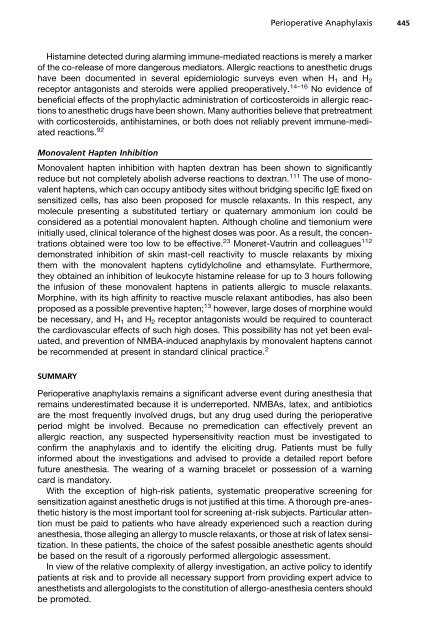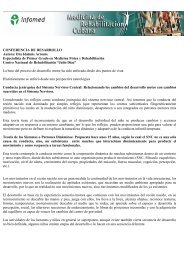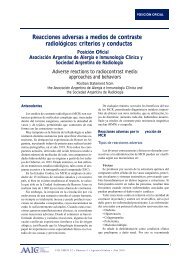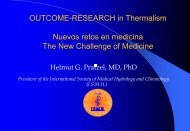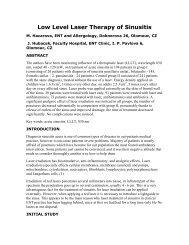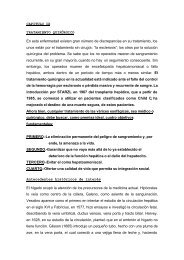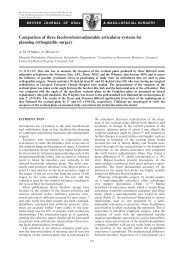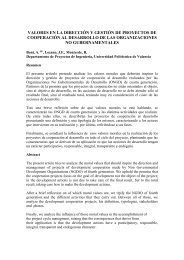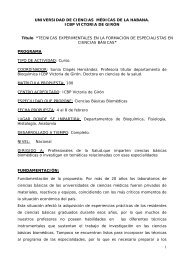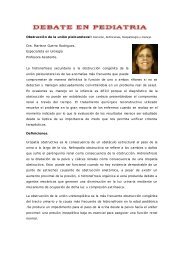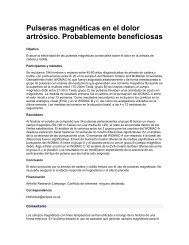Perioperative Anaphylaxis
Perioperative Anaphylaxis
Perioperative Anaphylaxis
You also want an ePaper? Increase the reach of your titles
YUMPU automatically turns print PDFs into web optimized ePapers that Google loves.
<strong>Perioperative</strong> <strong>Anaphylaxis</strong> 445<br />
Histamine detected during alarming immune-mediated reactions is merely a marker<br />
of the co-release of more dangerous mediators. Allergic reactions to anesthetic drugs<br />
have been documented in several epidemiologic surveys even when H 1 and H 2<br />
receptor antagonists and steroids were applied preoperatively. 14–16 No evidence of<br />
beneficial effects of the prophylactic administration of corticosteroids in allergic reactions<br />
to anesthetic drugs have been shown. Many authorities believe that pretreatment<br />
with corticosteroids, antihistamines, or both does not reliably prevent immune-mediated<br />
reactions. 92<br />
Monovalent Hapten Inhibition<br />
Monovalent hapten inhibition with hapten dextran has been shown to significantly<br />
reduce but not completely abolish adverse reactions to dextran. 111 The use of monovalent<br />
haptens, which can occupy antibody sites without bridging specific IgE fixed on<br />
sensitized cells, has also been proposed for muscle relaxants. In this respect, any<br />
molecule presenting a substituted tertiary or quaternary ammonium ion could be<br />
considered as a potential monovalent hapten. Although choline and tiemonium were<br />
initially used, clinical tolerance of the highest doses was poor. As a result, the concentrations<br />
obtained were too low to be effective. 23 Moneret-Vautrin and colleagues 112<br />
demonstrated inhibition of skin mast-cell reactivity to muscle relaxants by mixing<br />
them with the monovalent haptens cytidylcholine and ethamsylate. Furthermore,<br />
they obtained an inhibition of leukocyte histamine release for up to 3 hours following<br />
the infusion of these monovalent haptens in patients allergic to muscle relaxants.<br />
Morphine, with its high affinity to reactive muscle relaxant antibodies, has also been<br />
proposed as a possible preventive hapten; 13 however, large doses of morphine would<br />
be necessary, and H 1 and H 2 receptor antagonists would be required to counteract<br />
the cardiovascular effects of such high doses. This possibility has not yet been evaluated,<br />
and prevention of NMBA-induced anaphylaxis by monovalent haptens cannot<br />
be recommended at present in standard clinical practice. 2<br />
SUMMARY<br />
<strong>Perioperative</strong> anaphylaxis remains a significant adverse event during anesthesia that<br />
remains underestimated because it is underreported. NMBAs, latex, and antibiotics<br />
are the most frequently involved drugs, but any drug used during the perioperative<br />
period might be involved. Because no premedication can effectively prevent an<br />
allergic reaction, any suspected hypersensitivity reaction must be investigated to<br />
confirm the anaphylaxis and to identify the eliciting drug. Patients must be fully<br />
informed about the investigations and advised to provide a detailed report before<br />
future anesthesia. The wearing of a warning bracelet or possession of a warning<br />
card is mandatory.<br />
With the exception of high-risk patients, systematic preoperative screening for<br />
sensitization against anesthetic drugs is not justified at this time. A thorough pre-anesthetic<br />
history is the most important tool for screening at-risk subjects. Particular attention<br />
must be paid to patients who have already experienced such a reaction during<br />
anesthesia, those alleging an allergy to muscle relaxants, or those at risk of latex sensitization.<br />
In these patients, the choice of the safest possible anesthetic agents should<br />
be based on the result of a rigorously performed allergologic assessment.<br />
In view of the relative complexity of allergy investigation, an active policy to identify<br />
patients at risk and to provide all necessary support from providing expert advice to<br />
anesthetists and allergologists to the constitution of allergo-anesthesia centers should<br />
be promoted.


